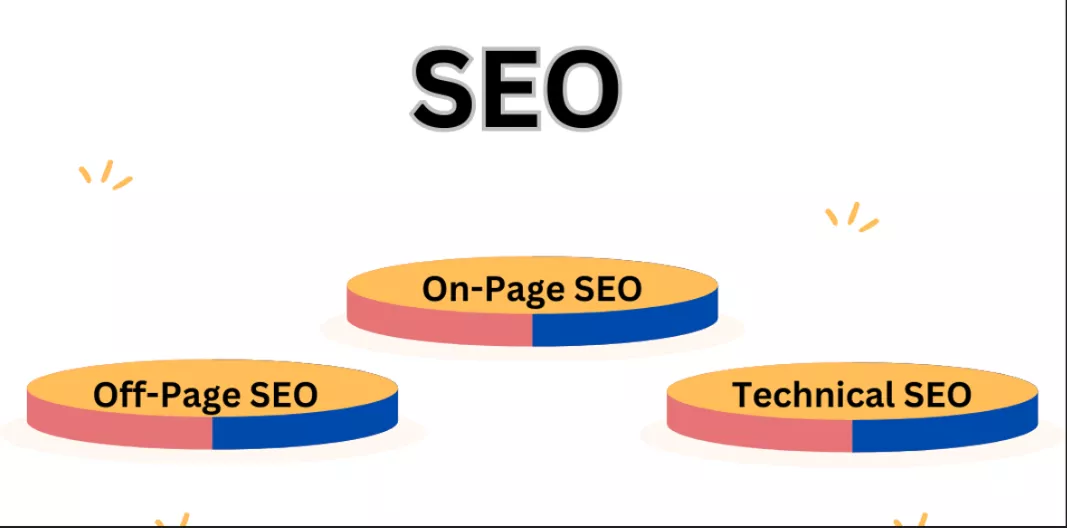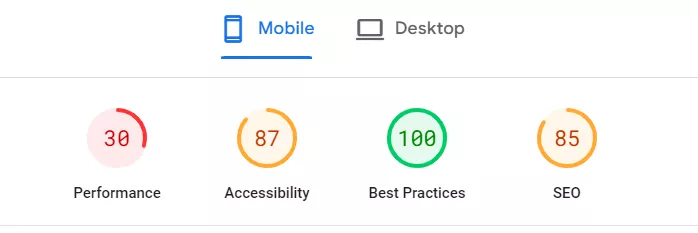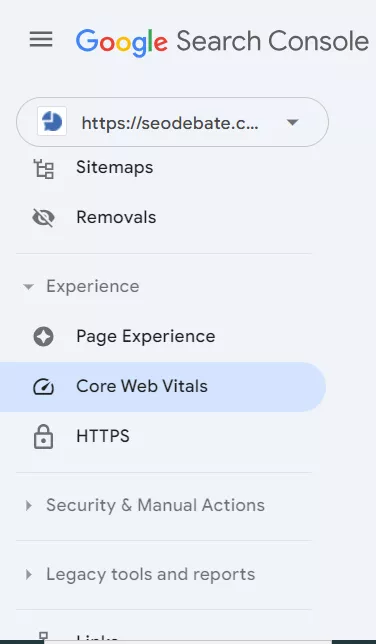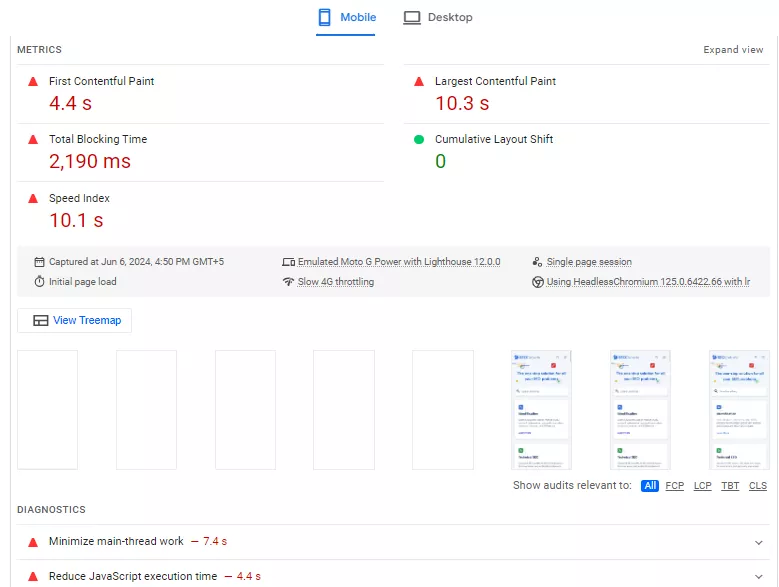In the SEO community, it is well-known that more than 50% of website traffic comes from organic searches.
While other marketing channels like social media and paid advertisement are also effective, most marketers prefer SEO for their businesses. Reason? SEO takes time but the results are worth watching and long-lasting.
In this detailed guide, you will come to know about what SEO management is, how to perform it and why businesses prefer it. Let's get started!
What is SEO Management?
SEO management, as its name suggests, is the practice of overlooking or managing your website's SEO practices.
It includes regular auditing of your website, staying up to date with the latest best practices, analyzing competitors, optimizing the website regularly and a lot more.
Consider it a combination of optimizing all major aspects of a website like onsite, offsite, and technical. All these things are preplanned and then executed. This is what SEO management is all about.
You may consider outsourcing your SEO management project to an SEO agency or you can go for an in-house team.
But keep in mind both have their own negative and positive sides. The final decision must be based on your unique requirements, budget, project size, etc.
Moving forward, it is important to tell you one thing, SEO isn't a one-time process. It requires continuous efforts to maintain your rankings and outperform the competitors, but first have a look at what is SEO.
What is SEO?
SEO means search engine optimization. Just like its name sounds, it involves a combination of practices to optimize and make your website appear higher in search engine results. This ultimately results in increased traffic to a website.
This process requires you to implement a bunch of strategies, implemented over a long period of time to see the required results.
The foundation of SEO is based on three pillars: on-page, off-page and technical. All three require attention because if any aspect of website optimization is missing, it will not lead you to get the desired results.

If you want to learn more about SEO and how it works, check it out here.
What are the Key Elements of SEO Management?
Now that you have learned about what is SEO and its management, you must be thinking about how to do it.
Before going into details, keep in mind that all the elements that I will discuss here play a crucial role in SEO, so missing any of them won't be in your favour.
Keep two things in mind!
If you have an in-house team, make sure everyone is well aware of the tasks assigned to them.
Similarly, if you partnering with an SEO agency, you must also know about all the best practices and their right implementation at the right time. This way you will be able to track your progress over time.
So, whoever is managing your SEO, it is important to cover these key areas:
On-Page Optimization
This involves optimizing content, images, meta tags, headings, URL structures and internal linking. That means all the elements that are present on a web page are optimized according to the standard best practices.
Keyword Research
This is one of the most crucial steps that your SEO manager must be aware of. Identifying various types of keywords relevant to your website like navigational, transactional and informational is very important.
This will help identify and target keywords that are directly relevant to the products or services you offer.
FYI: Read this in-depth guide on keyword research to clear everything in your mind related to it.
Content
Content is the king, so how can you forget to improve it?
Your content must be valuable to your readers. Review your content, identify any gaps and focus on providing additional value through it.
If there are any articles or blogs that aren't generating traffic to your website, consider improving them. Do keyword research, add more value to them, and thoroughly cover everything.
Expand your articles using statistics, data, and infographics and discard all instances of irrelevant or inaccurate information.
You can do this by reviewing all the old posts. Don't just update the old content but also keep on adding new and relevant pieces of information.
Images
Visuals play a major role in improving the quality of a web page.
If a topic isn't easily understandable, adding relevant and clear images or infographics makes it easy for a reader to understand the topic thoroughly. Also, the images are aesthetically pleasant.
The image files must also be optimized. They should be loaded fast and easily and also have relevant keywords or text describing the image properly.
Meta Tags
Meta tags, such as title tags and meta descriptions are two important things that represent your web page in search results.

Optimizing these two elements is crucial because it helps a user understand what your page is about. If the title and description do not reflect the content of the page, a user may quickly bounce back.
It results in a poor user experience and search engines will assume that you haven't provided any value to your visitors or the page isn't relevant.
So, to get the favour of search engines and guide your visitors, it is essential to write a comprehensive and relevant meta title and description. It will help both search engines and visitors understand your page’s content.
Look at top-performing pages and test different types of meta tags to ensure what is working best for you and improving CTR.
Headings
Header tags divide the content of a page in a hierarchical manner. It helps users understand different sections or sub-topics on a web page.
Consider a web page with large blocks of content without any headings or subheadings, wouldn't that be too much difficult to read?
That is the reason headings are used to break a page into several sections, which makes it easy for readers to understand the content or read a particular sub-topic of their interest.
To get good results, it is recommended to add your main targeted keyword in the headings or subheadings of your blog post. That doesn't mean you must overdo this. Avoid keyword stuffing and keep them natural.
URL Structures
Clean URL structures without any query strings or parameters enhance the user experience. So there must be a clear, concise and easy-to-remember URL structure.
Ideally, it must have the following features:
It must be short
Relevant
Have a focus keyword
Avoid unnecessary characters and stop words
Have lowercase letters, separated by hyphens
Internal Links
These are the links from one page of your website to another. It helps pass the authority and show relevance to that connected page.
Make sure when you write a new blog post, do link it internally with other relevant pages. This way it will keep your visitors engaged by directing them towards other useful information and as a result, it will increase time on the page.
You can use various tools such as SEMrush Site Audit to identify any issues with internal links on a website. This will highlight any broken links or orphan pages (having no links) on your website.
Once you identify those pages, you can add links to pages that are live or point to pages that currently do not have any internal links.
Schema Markup
Schema markup helps Google better understand the content of your website. It also displays additional information related to a web page like ratings, reviews, prices and more.
When you provide this additional information, you make your content eligible to appear in rich snippets that get more clicks than regular search results.

Remember to add markup each time you update your content or add a new blog or a product to your website. Make sure the person responsible for doing this knows the best practices for implementing schema markup.
FYI: Read our in-depth guide on schema markup to understand it fully.
Off-page Optimization
It refers to those practices that are usually done off the site. It includes making high-quality backlinks, promotion on social media, writing guest posts and content marketing.
Off-page SEO is as important as on-page SEO but you will have limited control over various strategies you are doing off the page. Such as requesting to write a guest post does not ensure that the other website will allow you to post a piece of content on their website.
Building authority using off-page SEO tactics is also a time-consuming process, but it will surely benefit you in the long run.
Link Building
Link building is one of the most important ranking factors. When your website has several high-quality backlinks, it signals to Google and other search engines that your website is an important source of information.
Keep in mind that having too many backlinks from irrelevant sites isn't a good sign. Your website must have quality links from authoritative and relevant websites.
Focus on quality rather than quantity. It is good to have a few high-quality backlinks rather than several low-quality or spammy ones.
Moreover, you can use some tools to identify the link opportunities by using their backlink gap analysis feature. SEMrush and ahrefs are best for this purpose.
Just enter your website URL and some of the competitors. It will give you a list of websites that are pointing towards your competitors but not yours.
This will give you a huge opportunity to reach out to those websites by offering them unique value through your content and asking for a backlink in return.
FYI: Want to know more about link-building opportunities? Read it here!
Content Marketing
This is another useful way to promote your website by compelling content creation.
You create various types of content for different channels like social media, podcasts, paid ads or email newsletters to reach out to your audience.
Keep in mind content marketing is different from a routine blog or article creation process. It particularly targets marketing your website or its content on various platforms by creating promotional content.
Let's suppose you have written a very good blog on your website and now you want to promote it. All you need to do is write a compelling copy about this blog and post it on your social media.
This will keep your readers engaged and will inform them about any new additions to your website.
Social Media
The importance of social media cannot be ignored nowadays. It is one of the best channels to bring more visitors, keep them engaged, and remain in touch with them directly.
Usually, when you manage an SEO campaign there is a dedicated person for social media management. However, some big companies also prefer to hire multiple employees separately for individual social media channels like Facebook, YouTube, Instagram, etc.
Whether you have an in-house team or hiring an SEO agency, make sure they are making efforts to bring real results via various social media channels.
There must be increased engagement, subscribers, and views across all channels. Moreover, make sure that your audience gets timely responses to their queries regarding your services.
Guest Blogging
In off-page SEO, guest blogging plays a crucial role. This is one of the best methods to get a link back to your website. It basically involves reaching out to website owners and asking them for a backlink by offering them a guest post.
Keep in mind that your guest blog must meet the criteria set by the website owner. Also, the content you are offering them is of high quality to avoid the chances of rejection.
It is not necessary to be a writing expert, simply knowing what is guest posting, what rules you need to follow, and how you can use it to earn a quality backlink is enough to manage your team.
Read more about guest blogging tactics here!
Email Outreach
Email outreach is a process of sending targeted emails to prospects such as companies or individuals in your industry mainly, to get backlinks, promote a specific product or service and build connections.
This method also works best especially when done in the right way. There are several ways by which you can make your email marketing campaign effective.
Send personalized and targeted emails, create concise and compelling subject lines, and provide real value.
Write your email in a way that truly conveys your message and convinces the readers that you are actually interested in offering them some value or developing a strong connection.
Manage your email outreach team by assigning clear goals. See if they are sending relevant emails to targeted prospects. Also, set a minimum threshold for sending emails daily.
This will increase your chances of getting a response from them.
Technical SEO
SEO has changed a lot since its early days.
Now, technical SEO is as crucial as other aspects of an optimized website. This includes technical features of a website like site speed, mobile friendliness, core web vitals, robots.txt, sitemaps, etc.
Site Speed
Site speed is considered a direct ranking factor and can hugely impact your website traffic. If a website loads too slowly, it frustrates the users and makes them leave your site immediately.
You may use various tools to check the speed of your website for both mobile and desktop versions.
Google PageSpeed Insights is the best tool that is free and also gives you insights on your website speed in a detailed manner.

If your website also loads slowly, it's time to optimize its speed.
You can do this by compressing images, uninstalling unused plugins, minifying JavaScript and CSS, and enabling browser caching. This will drastically improve your website speed.
Core Web Vitals
Core Web Vitals is a combination of three metrics that measure the speed, responsiveness and visual stability of a website.

You can access it using your Google Search Console account or the same Google PageSpeeed Insights tool mentioned above.

This tool shows you various numbers regarding your website speed and interactivity.
Once you see it using GSC, go to the “Why URLs aren't considered good” option to see the issues specific to certain URLs and fix them.
Robots.txt
Keeping your robots.txt file always up to date is quite important while managing your SEO campaigns.
Robots.txt file is placed in the root directory of your website and it instructs the search engines which pages they are allowed to access and which they are not.
There are many private pages that a website owner does not want to appear in search results or be accessed by bots. So they restrict the bots from accessing those pages by adding directives into robots.txt.
It ensures that only the intended pages are crawled by search engines.
FYI: For a deeper dive, check out our comprehensive article on robots.txt.
Sitemap
A sitemap is a file that lists all your website pages to help search engines easily find them.
Depending on how you have set up your website, you may need to manually update your sitemap.
However, if you are using certain tools or plugins you might not need to update it every time you add a new page. It is because those tools or plugins will keep it updated.
You can create a sitemap manually or use various tools. Once you have created a sitemap, submit it through your GSC account which is recommended and easy. Learn more about understanding, creating and submitting XML sitemaps with this comprehensive guide.
Just go to your GSC account and click the “Sitemaps”. Here you will be asked to submit the URL of your sitemap. You can enter and submit it here.
How to Successfully Manage an SEO Campaign
You have learned the three main areas of SEO management. These are super important for any successful SEO campaign.
You must know what all these three areas specify and how to perform them well.
But besides that, there is a clear roadmap that I have designed for you, so you can perform or make an SEO employee/company perform your SEO management tasks efficiently.
This will also help you see whether they are going in the right direction or not. Let’s see them one by one in a sequence!
Website SEO Audit
For me, a website audit is the very first step of any SEO management campaign. Before doing anything, you must know where your website stands in terms of traffic, visibility and conversions.
You will get an idea of how well your past SEO strategies performed and what you can do in the future to improve them.
There are plenty of tools that can be used to perform a website SEO audit but my favourite one is Screaming Frog combined with data from Google Search Console.
Download and install Screaming Frog on your desktop. Enter the URL of your website and run a site audit.
It will give you plenty of helpful information related to site issues such as broken links, security issues, thin content, improper redirects, non-friendly URLs, missing alt text and much more.
This data will give you a complete overview of any technical issues on your website.
Besides that, you can look into your GSC account to see your indexed pages, site performance, speed, keywords that bring you traffic, top-performing pages and a lot more.
This comprehensive site audit will help you understand what adjustments you need to make or ask from your SEO agency, or if you have already hired one, are they working the same way they should or not?
Competitive Analysis
Just like a site audit, competitor analysis also plays a significant role in improving your website’s SEO. It involves monitoring your competitor's campaigns and finding keywords to fill in your content gaps.
This also makes you understand how much effort you need to make to outrank your competitors.
The key things it will help identify are:
If your competitors are big authority sites or own small personal blogs
Do they have a huge backlink profile
Do they have a strong social media presence
How old are the domains
How much people trust them
These are the basic questions that you need to ask yourself and research on. This information will tell you how much quality content, authority backlinks, time, and budget you will be requiring to outperform your competitors.
You can do this task by reviewing each website and its data manually or performing it quickly using various free and paid tools like SEMrush Compare Domains option or Ahrefs Domain Comparison.
FYI: If you want to learn more about competitor analysis, here is a recommended article that will clear every concept related to it.
Set Clear Goals
After performing the above-mentioned steps, now it's time to set your goals first.
You know your website better, so set goals accordingly. It may vary from site to site but mainly those goals are all about bringing organic traffic, generating leads, building more backlinks, or increasing overall visibility.
Keep in mind SEO goals should be very clear and specific with a deliverable time.
For example, instead of saying that you will build backlinks, you must focus on a specific goal. You can say, "I will build 20 high-quality backlinks within a month through email outreach."
This way it will help in tracking your progress properly.
Create a Plan
After setting your goals, the next step is to organize them into a clear plan with actionable steps.
Remember it is good to assign each task to a dedicated person to get the maximum out of it.
If a person is doing multiple tasks, they may not be able to give their maximum output. To achieve your goals, it is best to assign them a clear and specific task.
Let's suppose you want to increase your organic traffic by 30% in the next 6 months by producing 25 high-quality blog posts, here is what you need to do.
Create a list of all primary and secondary keywords for these 25 posts
Make a content calendar with all the relevant details and publishing dates
Assign those posts to 2-3 writers with clear writing, editing, proofreading, and image creation guidelines
Review these articles and publish on set dates
Don't just stop here, your work isn't finished yet. Keep an eye on the performance of these posts and make a report on this on monthly or weekly basis
Analyze your campaign after 6 months, i.e., the performance of each blog post, ranking keywords, etc.
This is just a basic and simple representation of creating a plan. Some plans can be more complex and involve several other strategies along with creating content like building backlinks, improving site speed, increasing CTR, etc.
Track Results
The SEO management process takes months and is an ongoing effort. It is recommended to keep track of the results to see whether you are on track or not.
The main metrics you need to measure will depend upon your specific SEO campaign but usually, you want to track:
Organic traffic
Keyword rankings
Backlinks
Leads
Conversions
Sales
Google Analytics and GSC are the best ways to see the improvements. It provides you with data on monthly organic traffic, ranking keywords, user behaviour, real-time users, top-performing pages, traffic sources, and a lot more.
Evaluate your Campaign
Once you reach the end date, have a look at the results. See what you have achieved and what you failed to meet.
Analyze the outcomes of a campaign and see if you’ve fully implemented your strategy, got the results, achieved higher rankings, or built a backlink profile to a set limit, etc.
Besides achievements also see the areas that need improvements. Make a checklist and see if:
You have completed a given task in a specified time
Was there any complications
Did you have any issues during this process
Did you discover any new strategies, ideas, or opportunities
Which was the most challenging part of the campaign
This is not all. You can modify and add more questions based on the nature of your SEO campaign.
SEO Manager vs SEO Agency
An SEO manager does not only formulate the strategies for increasing the website's organic traffic or visibility but he/she is also responsible for correctly implementing, reviewing, and managing them.
They supervise all the strategies or campaigns such as content creation, planning, backlinking, and analyzing other key metrics.
This does not only involve one-time implementation but also requires constant monitoring and keeping up with the latest algorithm changes, trends and search engine updates.
Besides taking care of all these tasks, an SEO manager also supervises other team members depending on the tasks and organizational structure, like content writers, designers, other SEOs, social media managers and developers.
A lot of companies prefer to choose SEO management agencies to outsource their projects.
The difference is they have a team with each person dedicated to a specific task in an SEO campaign. From initial strategy-making to final reporting and results evaluation, you will professionally get each service.
That doesn't mean you will not get professional services from an SEO manager. The main consideration is when you choose one, you must look for an agency or individual with a proven track record.
BTW if you are looking for professional SEO management services, Contact Us. From initial planning to final execution and constant monitoring, you will get everything on one platform.
So what you must see in an SEO manager or agency? Here are a few things:
Consider various individuals and agencies. Don't just pick the first you interviewed. Pick several top-performing individuals/companies, compare their profiles and then choose the one that best suits your budget and needs and has a proven track record.
Explore them more online by reading reviews and case studies mentioned on their websites and other platforms. Check what other people say about them and how much trust they put in them.
Do not just blindly pick the one that makes false promises. You know SEO doesn't happen overnight, it takes time. So stay away from the agencies or individuals who promise you overnight success.
Before signing any contract, clear any confusion regarding their performance, success rate, terms, etc.
Remain in direct touch with the person who is leading this campaign for you. This will help ensure timely coordination and avoid any confusion.
Which One to Choose?
You must have fully understood the role of an SEO manager as well as an agency. Now the question is which one is the best to choose or should you hire one or not?
The simple answer is yes if you can afford it. We all know that SEO is a great process to show up your websites higher in search results.
Who does not want to do this? The problem is with the budget, time limitations, and availability of experienced professionals.
So I would suggest if you have a limited budget and you can manage in house team you must go for an SEO manager who will be responsible for each task - from hiring to final implementation - within your limited budget.
On the other hand, SEO agencies will cost you more but there you do not need to get worried about making a team or hiring several professionals for each task. They will do it on your behalf and will deliver the results.
Takeaway
Choosing the right SEO management services takes time and effort but the results are worth watching. It can lead your website far from its initial or current state in terms of rankings, visibility, organic traffic, and sales.
Whether you choose an in-house team or go for an agency, make sure you are also familiar with this entire process or at least have a general understanding.
This way you will be able to allocate your budget and resources properly. Also, this will help in monitoring your campaigns and asking for updates.
Keep in mind this is a never-ending process, so instead of getting frustrated, focus on improving your strategies. With the right tools and strategies, you can definitely set your company up for success.


